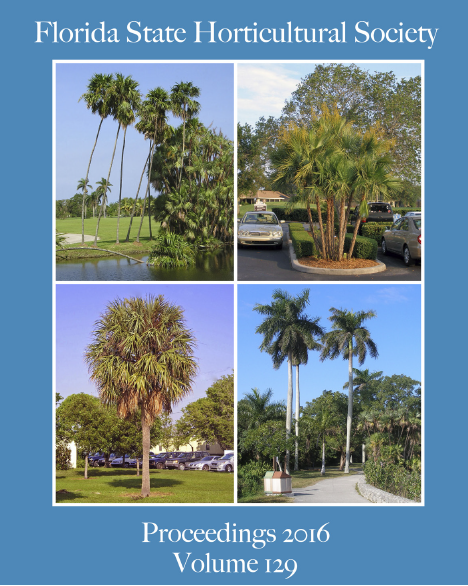Abstract
Florida is one of the largest producers of processed citrus in the United States; however, citrus greening disease (Candidatus Liberibacterasiaticus) has forced growers to diversify their orchards to remain economically viable. Peaches are an alternative crop as Florida’s subtropical climate and the availability of low-chill cultivars allows growers to harvest and market fruit before Georgia or South Carolina fruit become available. Nevertheless, irrigation recommendations and crop coefficients for irrigation scheduling were determined in arid climates which can overestimate irrigation requirements in humid, subtropical climates. Alternatively, irrigation recommendations from citrus (an evergreen tree) cannot be used for peaches (a deciduous tree). Therefore, this study evaluated irrigation recommendations to optimize subtropical peach production in Florida. Two orchards located in Central Florida were chosen to evaluate the effect of four water volumes: 1) 0.17 in/h (current practice); 2) 0.13 in/h; 3) 0.09 in/h; and 4) 0.08 in/h per plant, on tree water stress, pruning weight, and fruit attributes. There is no significant effect of irrigation volume on biomass production (pruning weight), trunk cross sectional area, stem water potential, marketable yield, sugar content, or fruit size, suggesting that irrigation water volume can be reduced approximately by 50% of current irrigation practices without reducing fruit quality or plant growth.

